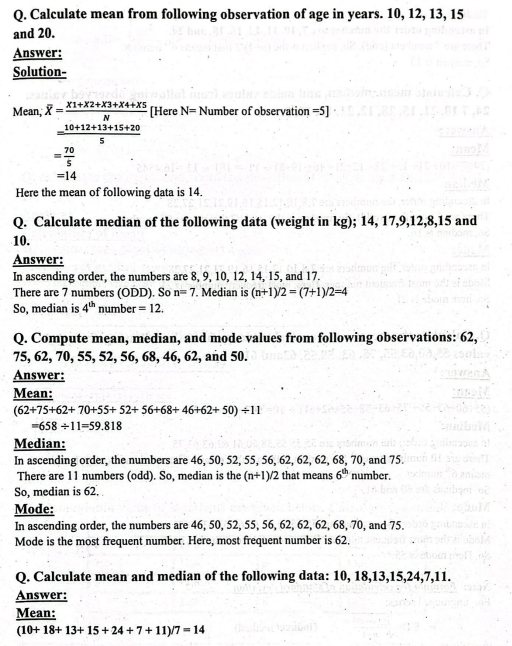Graphic Presentation – In its most common sense, methodology is the study of research methods. However, the term can also refer to the methods themselves or to the philosophical discussion of associated background assumptions. A method is a structured procedure for bringing about a certain goal, like acquiring knowledge or verifying knowledge claims. This normally involves various steps, like choosing a sample, collecting data from this sample, and interpreting the data. The study of methods concerns a detailed description and analysis of these processes. It includes evaluative aspects by comparing different methods.
In this way, their benefits and drawbacks are evaluated, as well as the research goals for which they may be used. These descriptions and evaluations are predicated on philosophical background assumptions; examples include how to conceptualize the phenomena under study and what constitutes evidence in favor of or against them. In its broadest sense, methodology encompasses the discussion of these more abstract issues.
Graphic Presentation
Definition of Graphic Presentation:
Graphical presentation refers to the use of intuitive charts to clearly visualize and simplify data sets. Data is ingested into graphical representation of data software and then represented by a variety of symbols, such as lines on a line chart, bars on a bar chart, or slices on a pie chart, from which users can gain greater insight than by numerical analysis alone.
Or,
Graphic presentation represents a highly developed body of techniques for elucidating, interpreting, and analyzing numerical facts by means of points, lines, areas, and other geometric forms and symbols.

Types of Graphical Representation
➤ Line Graphs – Line graph or the linear graph is used to display the continuous data and it is useful for predicting future events over time.
➤ Bar Graphs-Bar Graph is used to display the category of data and it compares the data using solid bars to represent the quantities.
➤ Histograms – The graph that uses bars to represent the frequency of numerical data that are organized into intervals. Since all the intervals are equal and continuous, all the bars have the same width.
➤ Line Plot-It shows the frequency of data on a given number line. ‘x’ is placed above a number line each time when that data occurs again.
➤ Frequency Table – The table shows the number of pieces of data that falls within the given interval.
➤ Circle Graph – Also known as the pie chart that shows the relationships of the parts of the whole. The circle is considered with 100% and the categories occupied is represented with that specific percentage like 15%, 56%, etc.
➤ Stem and Leaf Plot – In the stem and leaf plot, the data are organised from least value to the greatest value. The digits of the least place values from the leaves and the next place value digit forms the stems.
➤ Box and Whisker Plot – The plot diagram summarizes the data by dividing into four parts. Box and whisker show the range (spread) and the middle (median) of the data.
Table
Definition of Table:
A table is an arrangement of data in rows and columns, or possibly in a more complex structure. Tables are widely used in communication, research, and data analysis.
Parts of Tabie:
In general, a statistical table consists of the following eight parts. They are as follows:
9. Table Number: Each table must be given a number. Table number helps in distinguishing one table from other tables. Usually tables are numbered according to the order of their appearance in a chapter. For example, the first table in the first chapter of a book should be given number 1.1 and second table of the same chapter be given 1.2 Table number should be given at its top or towards the left of the table.
10. Title of the Table: Every table should have a suitable title. It should be short & clear. Title should be such that one can know the nature of the data contained in the table as well as where and when such data were collected. It is either placed just below the table number or at its right.
11. Caption: Caption refers to the headings of the columns. It consists of one or more column heads. A caption should be brief, concise and self-explanatory, Column heading is written in the middle of a column in small letters.
12. Stub: Stub refers to the headings of rows.
13. Body: This is the most important part of a table. It contains a number of cells. Cells are formed due to the intersection of rows and column. Data are entered in these cells.
14. Head Note: The head-note (or prefactory note) contains the unit of measurement of data. It is usually placed just below the title or at the right hand top corner of the table
15. Foot Note: A foot note is given at the bottom of a table. It helps in clarifying the point which is not clear in the table. A foot note may be keyed to the title or to any column or to any row heading. It is identified by symbols such as *,+,@,£ etc.
16. Source Note: The source note shows the source of the data presented in the table. Reliability and accuracy of data can be tested to some extent from the source note. It shows the name of the author, title, volume, page, publisher’s name, year and place of publication of the book or journal from which data are complied.
Different Uses of Table:
There are several specific situations in which tables are routinely used as a matter of custom or formal convention.
F. Publishing
- Cross-reference (Table of contents)
G. Mathematics
Main article: Mathematical table
- Arithmetic [(Multiplication table)]
- Logic [(Truth table)]
H. Natural sciences
- Chemistry (Periodic table)
- Oceanography (tide table)
I. Information technology
J. Software applications
Modern software applications give users the ability to generate, format, and edit tables and tabular data for a wide variety of uses, for example:
- word processing applications;
- spreadsheet applications;
- presentation software;
- tables specified in HTML or another markup language
General Rules of Tabulation
- A table should be simple and attractive. There should be no need of further explanation (details).
- Proper and clear headings for columns and rows are necessary.
- Suitable approximation may be adopted and figures may be rounded off.
- The unit of measurement should be well defined.
- If the observations are large in numbers they can be broken into two or three tables.
- Thick lines should be used to separate the data under big classes and thin lines to separate the sub classes of data.

Graph/ Chart:
A Chart, also called a graph, is a graphical representation of data, in which “The data is represented by symbols, such as bars in bar chart, lines in a line chart or slices in a pix chart”.
[Ref-K.Park 24]
Or
A chart is a graphical representation of data, in which “the data is represented by symbols, such as bars in a bar chart, lines in a line chart, or slices in a pie chart”.
Four of the most common charts are:
1. Histogram
2. Bar Chart
a) Simple bar chart.
b) Multiple bar charts.
c) Commonest bar chart.
3. Line Chart.
4. Pie Chat
(Ref. Dr. Md. ZHS/1″)
Definition of Histogram:
It is a pictogram of frequency distribution. It consists of a series of blocks. The class . intervals are given along the horizontal axis and frequencies along the vertical axis. The area of each block or rectangle is proportional to the frequency.
[Ref. K. Park/24/845]
Uses of histogram
➤ Summarize large data sets graphically
➤Compare measurements to specifications
➤ Communicate information to the team
➤ Assist in decision making

Histogram is made up of five parts:
➤Title
➤ Horizontal or X-Axis
➤ Bars
➤ Vertical or Y-Axis
➤ Legend
Distinction between histogram and bar diagram:
| Bar diagram | Histogram |
| The columns are positioned over a label that represents a categories variable. | The columns are positioned over a label that represents a quantitative variable. |
| The height of the column indicates Size of the group defined by the categories. | The column label can be a single value or a range of values. |
| Length of bar drawn vertical or horizontal indicates the frequency of a character. | The histogram is two dimensional both length & width of the bar are important. |
| It is a popular & easy method for visual comparison. | It is a graphical presentation of frequency distribution. |
| Bar are not joined together. They remain separated for distinct visual look. | The rectangular block or histogram is joined with each other. |
| The height of a bar is proportional to its frequency. | The height of a rectangular block or histogram is proportional to the frequency of each class. |
(Ref. K. park 24 & ZHS 1″)

Read more:
